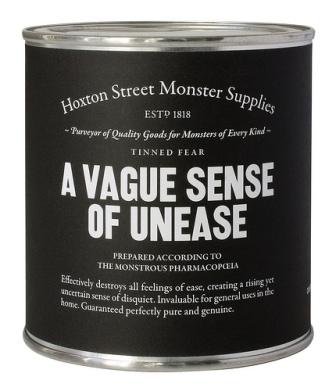 Stories need two hearts. I’m going to call them the warm heart and the dark heart.
Stories need two hearts. I’m going to call them the warm heart and the dark heart.
The warm heart is the bond we feel with the central characters. It is the pleasure of spending time in their company. I hesitate to call it liking; it may not be so simple. Our attachment may be to just one person and their flaws and troubles, or it may be to a web of relationships. It is affection, but rough-edged. It is warm, but it might not be cuddly. It’s push and pull, trouble and strife, idiocies and idiosyncrasies. But it is where the reader feels at home.
And then there is the dark heart. The dark heart is jeopardy. The shadow at the end of the alleyway. The characters may have other problems in the story. They may fight miscellaneous foes. But the dark heart is an ultimate disturbance that will demand a day of reckoning.
Two long-running TV shows illustrate this in action. Fringe has both hearts. The central characters form a story family. Some of them are bonded by filial ties: the father, Walter; the son, Peter. There’s Olivia, the FBI agent who becomes Peter’s lover. There’s Astrid, a lab assistant sidekick who becomes a close friend. They are the warm heart of the show; the humans who have real and complex relationships and sally forth to do battle. And Fringe has its dark heart. The characters are on borrowed time; every day brings them closer to a confrontation they cannot escape.
One heart down
By contrast, Doctor Who, whose title character actually has two hearts, only has one of them working.
The story’s warm heart is in good shape. The Doctor and his TARDIS companion always have a vibrant relationship that brings us back week after week. We also get drop-ins from the extended story family: the Doctor’s wife; the occasional friendly alien he befriended while saving them. Previous companions are also available. This creates a galaxy family bonded by experience and affection.
The warm heart beats strongly. But the dark heart does not.
Now that might seem like nonsense. Doctor Who is all about getting into danger and fighting monsters, right? But they don’t treat these as seriously as they treat the character universe.
The threats are often negligible. Too often, the Doctor wins with a gadget, some fast-talking, an asspull or a vague wave of the omnitalented sonic screwdriver. He never has to raise his game to win. And the scriptwriters frequently bend the rules of their own show – thus disrespecting their own universe.
Although each series has an overall arc, which is where the dark heart should be beating its dreadful rhythm, it is false. It never produces a confrontation that will really put the Doctor on his mettle, or that could credibly destroy him. Even if the writers trick it up to look like that, he’s usually freed in one bound, and does not have to go through the wringer.
Because the writers don’t make us believe in the dark heart, the warm heart loses some of its power. You could say this demonstrates that we need the story to be taken as seriously as the characters are. Controversial.
Fringe goes one step further to genius. Here is why: the warm heart created the dark heart. Walter Bishop committed a crime that started an epic war. His son died, and so he opened a wormhole to a parallel universe and stole him back. The flawed warm heart let the dark heart in.
In a great story, the warm heart and the dark heart pump each other with life. The dark heart makes the warm heart more precious. And the warm heart makes the dark heart more terrible.
Thanks for the hearts pic Joselito Tagarao and the Fringe pic hherbzilla
Let’s discuss some stories – film, TV or prose – with warm and dark hearts. Buffy, anyone?






